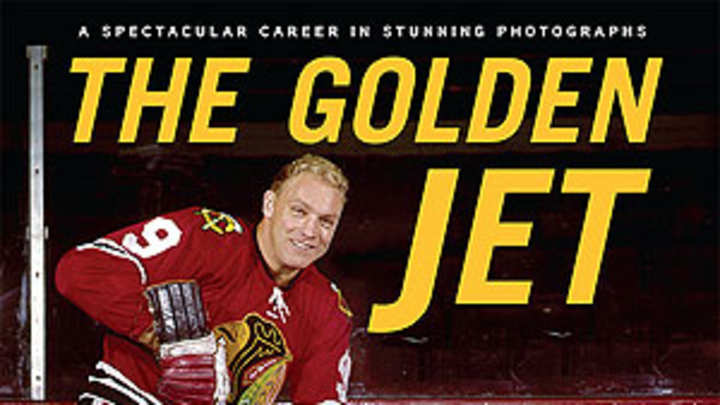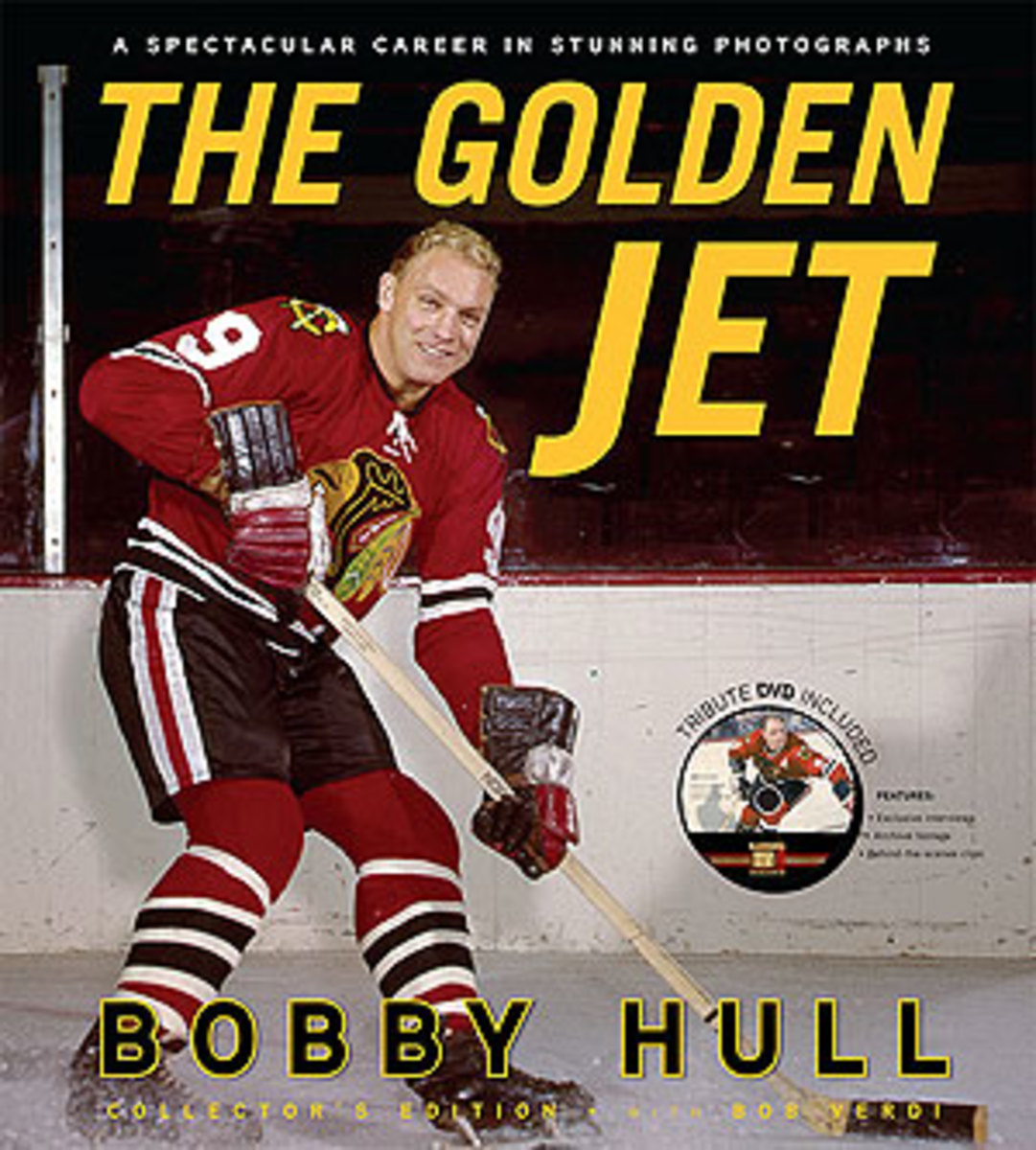Two minutes for booking: "The Golden Jet" could have been as great as Hull

A new career retrospective on Bobby Hull curiously leaves out his years with the WHA's Winnipeg Jets. (Courtesy of Triumph Books)

By Stu Hackel
In his prime, Bobby Hull was Original Six hockey's most dangerous and prolific goal scorer. With his lethal slap shot, his powerful skating, matinee idol good looks and ability to bring fans out of their seats, the Golden Jet was the game's top drawing card, the biggest sports star in Chicago and, to opponents and fans of other teams, the most feared player in the league.
Younger fans who primarily know him as Brett's father likely can't begin to appreciate Hull's talent or charisma. The thrilling sight of him flying down left wing, wearing that famous sweater with the Indian head crest on his chest and with puck on his stick lifted fans out of their seats throughout the league. Enemy coaches would draw up their entire game plans with stopping Hull as the focus. He'd absorb all variety of physical punishment and come back for more. A first team All-Star 10 times and the first player to break the 50-goal barrier, he would famously make his team's bus wait at the arena after a game while he fulfilled every autograph request and answered every fan's question. For fans of a certain generation, Hull was it.
In 1972, when Hull jumped from the NHL to the WHA, "It shook the entire sports industry," according to the new book The Golden Jet, by Bobby Hull with Bill Verdi (Triumph Books, 300 pages). "Only one player could provide the rival league with instant credibility and traction: Bobby Hull. His move, rife with pressure to produce, immediately enhanced the value of players in either league."
So it is more than surprising that this book, which is almost entirely devoted to photos with Hull's captions, completely ignores his post-Blackhawks career with the Winnipeg Jets. Not one photo. Not one. This shortchanges Hull's legacy as a pioneer, not just (with Stan Mikita) of the curved stick blade, but also his historic leap to the enemy league, the million dollar contract, the partnering with European players to create breathtaking hockey and win championships in Winnipeg, his personal protest against violence and fighting in the sport. All of these are momentous hockey events. None of them are a part of this book. It's as if when Hull left Chicago, he ceased to matter. Nothing could be further from the truth.
That's not to say the book isn't worthwhile. It takes on the feeling of a guided tour from Hull's baby pictures to his minor hockey days, his early pro career, and many of his high points as a Hawk. He doesn't write anything too inflammatory, and given his history, perhaps that's wise. There are a bit too many posed shots, however, where action might have been more welcome, but Hull was as photogenic on the ice as he was exciting in person.
Additionally, the reproduction of some photos is, unfortunately, inconsistent. Some lack the sharpness of the originals, and source material is to blame, while others just seem poorly scanned. Triumph Books has a long history of producing very good hockey works, so seeing these sub-standard reproductions is surprising.
One big bonus that helps compensate for any shortcomings is a DVD inside the book that includes video of Hull in action, his 1983 jersey retirement ceremony in Chicago, interviews with him and others (including his brother Dennis, who attributes the NHL's 1967 expansion to Hull's popularity), and even a series of "Happy Hulliday" commercials that he made for a local bank.
